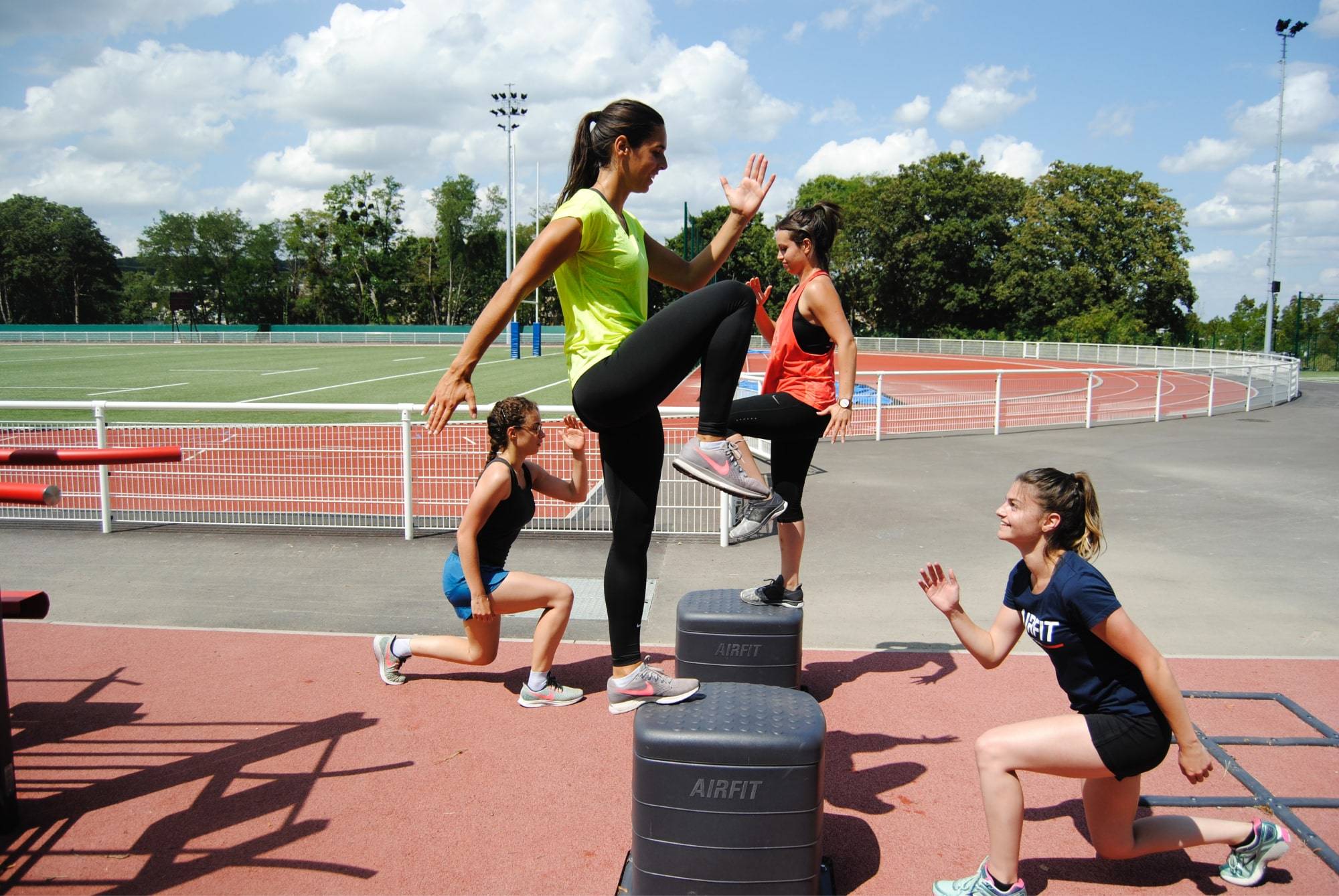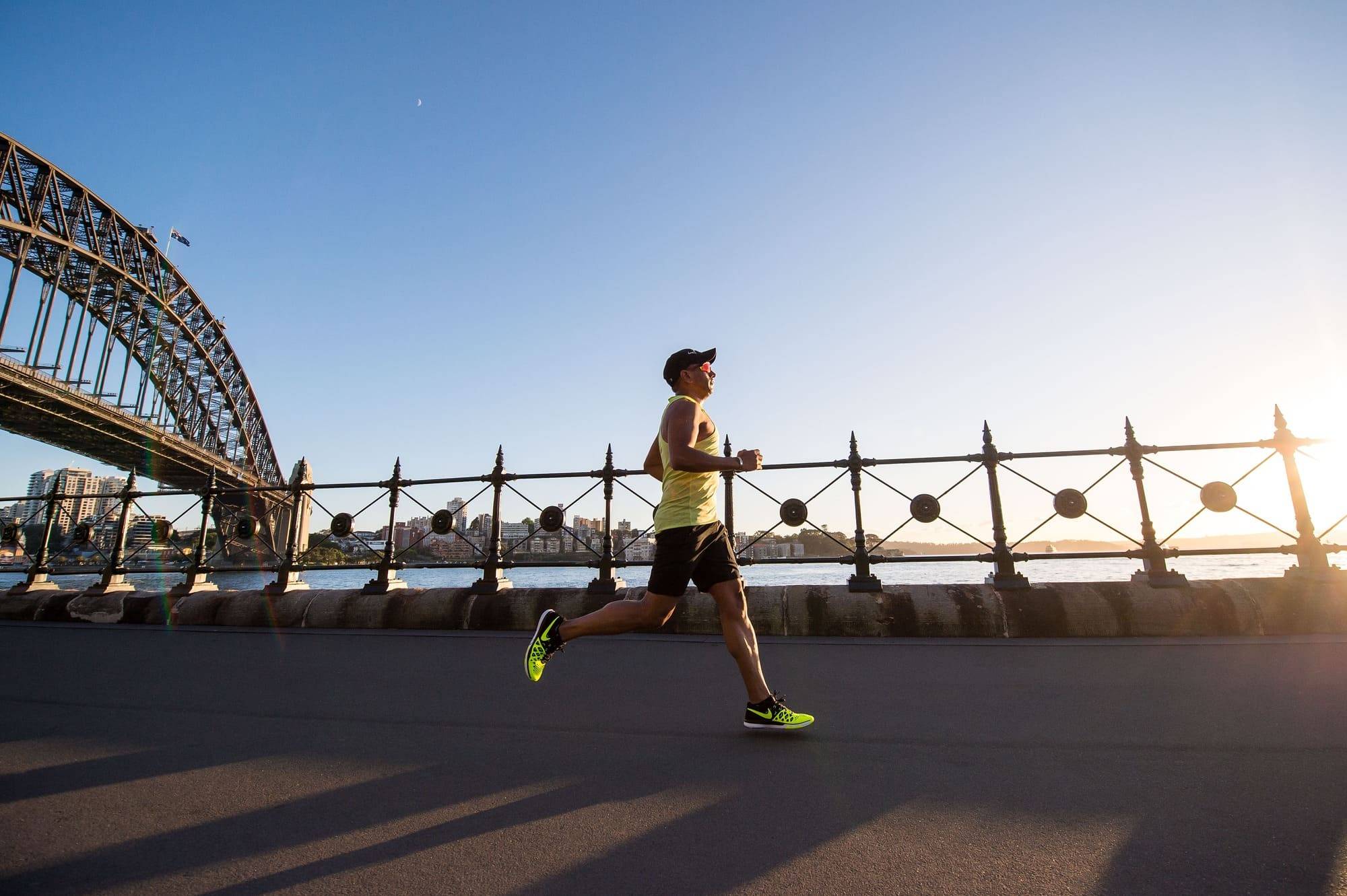Strength training is typically associated with free weights, but not every amateur athlete can make it to the gym. Fortunately, the desired load can be obtained without dumbbells and barbells. Below, we’ll show you 10 great strength training exercises for runners to build strength in your legs and improve your running economy.
Exercises to Improve Running
The most effective exercises involve the main muscle groups most closely associated with running and follow the vector of the force application.
In other words, strength exercises should involve the muscles of the legs and core: they are the ones that work the most while running. Jumping exercises as part of your leg workout for runners will improve the explosive power of the legs (the ability to exert maximum force in the minimum time).
Below, you will see examples of strength training.
1. Taking the Hip out of the Lunge
This exercise loads the muscles of the hips and legs and pumps a sense of balance. Perform it intensively; at the moment of bringing the hip forward, rise up on the toe to add additional load to the muscles of the lower leg. Do 10-15 repetitions for each leg.
2. Bench Hip Press on One Leg
This exercise loads the gluteal muscles and hips and develops a sense of balance. The lower the bench, the more difficult it is to perform.
Try to keep your back straight and do not plop down on the bench; instead, gently lower yourself onto it. This will provide additional stress on the hip flexors. Do 10-15 reps with each leg.
3. Squat on One Leg
This exercise fully engages the hip muscles, develops a sense of balance, and increases mobility when performed in a full range.
Make sure that the knee in front of the standing leg does not go much beyond the toe of the foot, squat in a full range (as long as the stretch is enough), and help yourself with your hands. Do 10 squats, switch legs, and repeat.
4. Ballistics of the Foot
This movement provides a good load on the extensor muscles of the foot (calf and soleus) and strengthens the ligaments of the ankle joint.
Make sure that the toe and knee of the working leg are directed forward, and during the lift, the ankle joint goes straight up without turning in or out. Do 15 times with each leg.
5. Glute Bridge on One Leg
This exercise loads the muscles of the back of the thigh and buttocks. Raise and lower the pelvis smoothly. For additional load, tighten the buttocks at the top of the exercise. Do 10-15 reps on each leg.
6. Low Spread
After this exercise, the quadriceps – the muscles on the front side of the thigh – will burn. Perform a lunge in full range. Help yourself with your hands, but don’t touch the ground with your standing knee.
Try not to lose the squat position during the change of legs to keep the muscles working during each phase of the exercise. Do 20 reps total per set.
7. Jumping on the Bench
This exercise builds explosive leg strength and strengthens the ankle ligaments, which reduces the risk of injury while running.
Find a stable elevation about 1.64 ft from the floor. You can gradually increase the height to increase the difficulty of the movement and improve your explosive power. Perform 20 jumps per set.
8. Jumping out of a Semi-Squat
This is another exercise to develop explosive strength. Squat down to just above where the hips are parallel with the floor – then jump up.
While squatting, do not lift your heels off the floor, and keep your back straight. Do 20 jumps.
9. Stretching on a Bench
10. Statodynamic Squats
Move within a limited range, pausing slightly at the bottom. Do not straighten up until the end of the exercise – so the thigh muscles will be in constant tension.
Keep your back straight and keep your heels off the floor. You can put your hands on your chest or in front of you, whichever is more convenient. Do 20 squats per set.
Also, do not forget about exercises for the development of the muscles of the abs and back. Choose 1-2 options and add them to every strength workout. Change movements periodically to load all the muscles of the core evenly.
Strength Training Program for Runners
Do strength training 2-3 times a week, on rest days or before running.
Start by picking 3-4 exercises and performing them in two sets. Gradually progress to 4-5 exercises. Rest at least 2-3 minutes between each set.
About a month before the full or half Marathon, strength exercises for runners should be reduced. Leave only exercises for the abs and 1-2 sets of lunges, squats, and steps to maintain overall tone.
- 2-3 strength training sessions per week (separate from or before runs).
- 5 exercises for the legs, 1-2 for the abs and back.
- 3-4 sets, then 4-5 sets.
- Rest between sets for 2-3 minutes.
Professional athletes must perform exercises to develop strength. These loads will increase the economy of running – the ability to work with less oxygen and energy costs, which means you can run faster and longer.
Besides, additional exercises to train the neuromuscular system will help muscles respond faster to brain commands and contract stronger and more smoothly, which also helps to run better.






